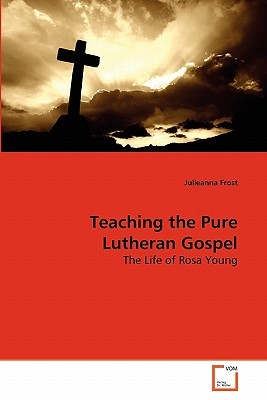
- We will send in 10–14 business days.
- Author: Julieanna Frost
- Publisher: VDM Verlag
- ISBN-10: 3639286138
- ISBN-13: 9783639286137
- Format: 15.2 x 22.9 x 1.1 cm, minkšti viršeliai
- Language: English
- SAVE -10% with code: EXTRA
Reviews
Description
This biographical study examines the life and work of Dr. Rosa Jinsey Young (1890-1971). As an African American, Young was raised in the African Methodist Episcopal (A.M.E.) tradition and educated in their schools yet converted to become a Lutheran teacher and missionary in her home state of Alabama. In this role she was the founder of numerous Lutheran parochial schools as well as Concordia College - Selma. This study has implications for our understanding of race, religion and gender by showing how Young manipulated her multiple minority identities to allow for effective action in her community and church. It shows how historical events and challenges interacted with Young's various identities; it provides a detailed picture of private religious schools for black children in the Jim Crow south; it shows how a conservative Lutheran denomination engaged in missionary work in the Black community; and it provides an understanding of the complex reactions to the Civil Rights movement.
EXTRA 10 % discount with code: EXTRA
The promotion ends in 22d.03:29:36
The discount code is valid when purchasing from 10 €. Discounts do not stack.
- Author: Julieanna Frost
- Publisher: VDM Verlag
- ISBN-10: 3639286138
- ISBN-13: 9783639286137
- Format: 15.2 x 22.9 x 1.1 cm, minkšti viršeliai
- Language: English English
This biographical study examines the life and work of Dr. Rosa Jinsey Young (1890-1971). As an African American, Young was raised in the African Methodist Episcopal (A.M.E.) tradition and educated in their schools yet converted to become a Lutheran teacher and missionary in her home state of Alabama. In this role she was the founder of numerous Lutheran parochial schools as well as Concordia College - Selma. This study has implications for our understanding of race, religion and gender by showing how Young manipulated her multiple minority identities to allow for effective action in her community and church. It shows how historical events and challenges interacted with Young's various identities; it provides a detailed picture of private religious schools for black children in the Jim Crow south; it shows how a conservative Lutheran denomination engaged in missionary work in the Black community; and it provides an understanding of the complex reactions to the Civil Rights movement.


Reviews